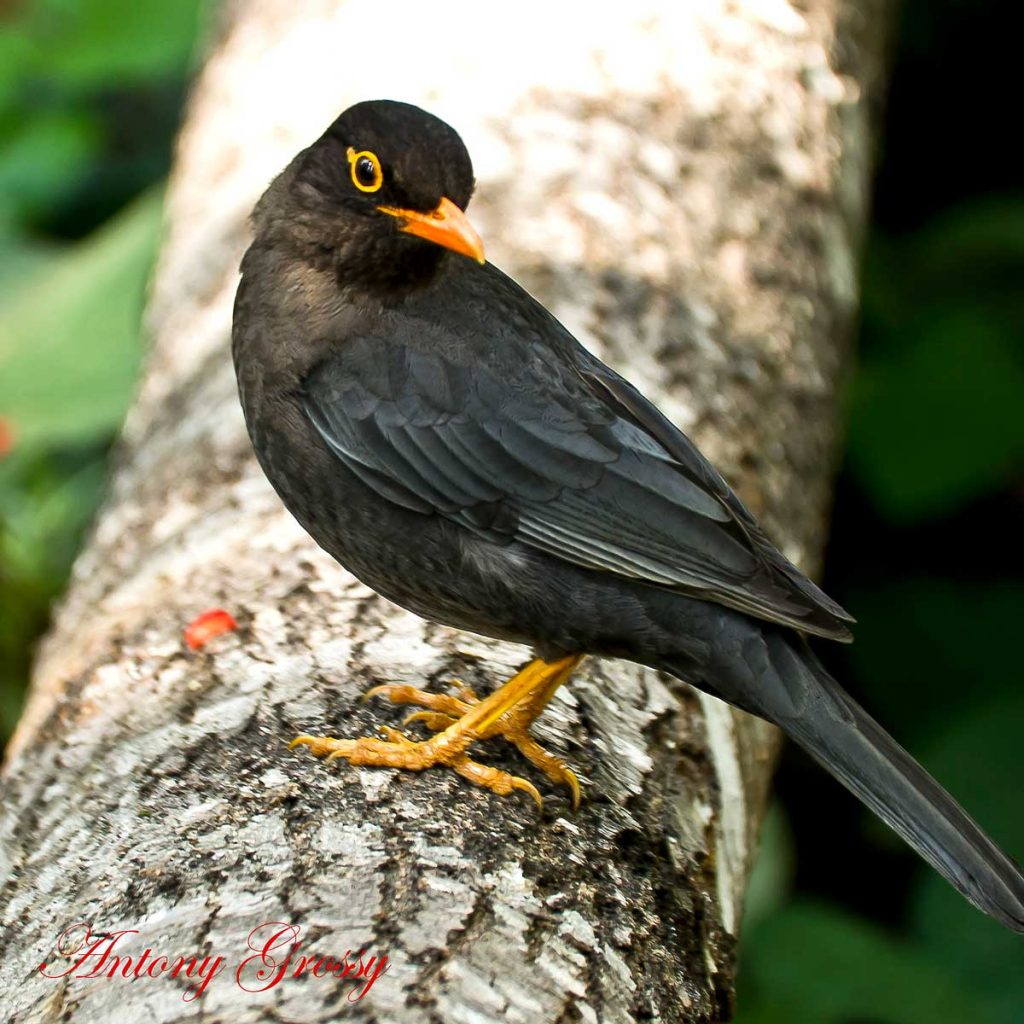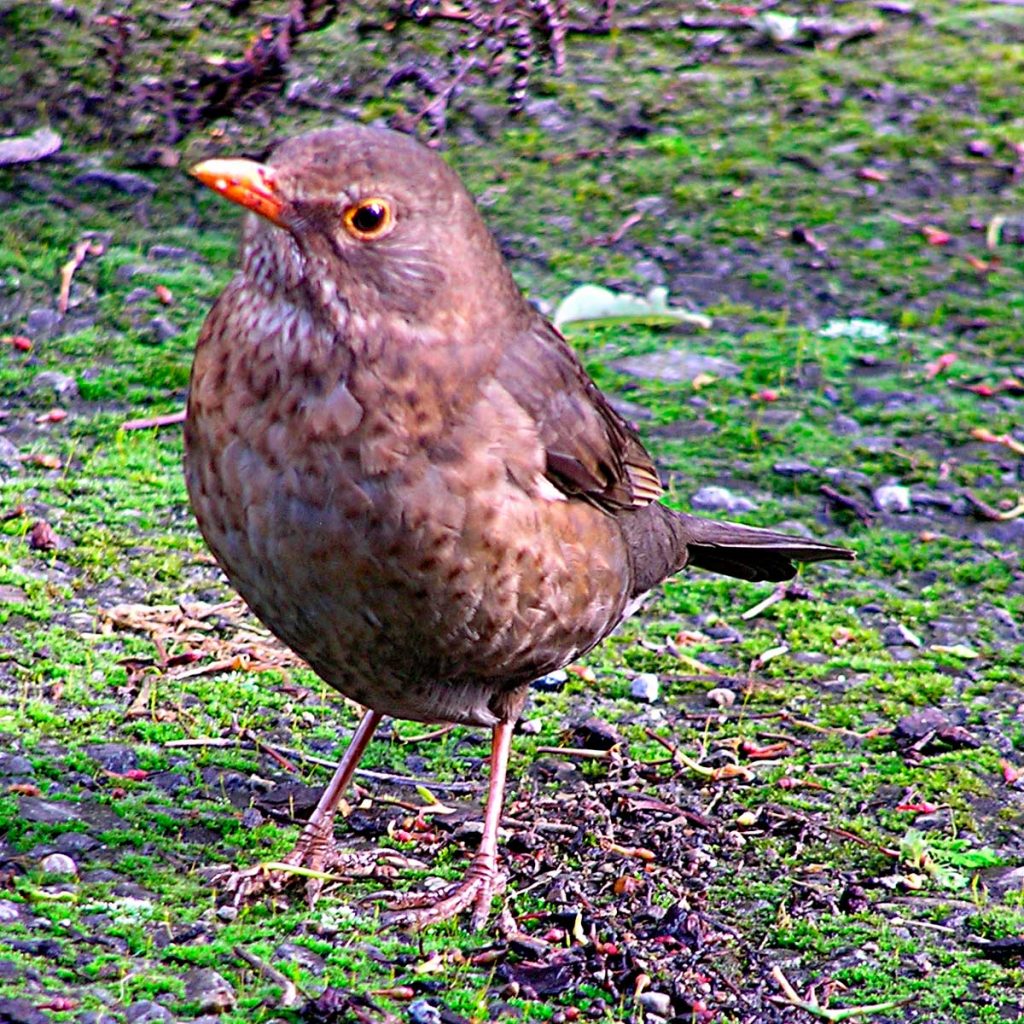
Birds / Blackbird
Information for Juniors
Blackbird
- Blackbirds were introduced throughout the three main islands of New Zealand from1867.
- Blackbirds help the environment by spreading the seed of many native plants.
- The blackbird’s food consists of insects, snails, worms, seeds and fruit. In dry weather, especially when feeding young birds.
- When they move on the ground they don’t walk but hop instead.
- Blackbirds usually return to the same breeding territory each year.
- Normally the female builds the nest alone, in a fork of a shrub or hedge. It is constructed of grass matted together by mud and lined with finer grass.
- They lay four or five eggs which are blue-green speckled with brown.
- They raise up to three broods a year.
- The female carries out the incubation during which time she is fed by the male.
- The Blackbird male is black with an orange bill and eye-ring.
- The Blackbird females are dark brown with a streaky underside.
What does it sound like?


Information for Junior Secondary
Blackbird
- Blackbirds were introduced throughout the three main islands of New Zealand between 1867 and 1880.
- Blackbirds help the environment by spreading the seed of many native plants.
- The blackbird’s food consists of insects, snails, worms, seeds and fruit.
- In dry weather, especially when feeding young birds, they may kick out plants in the garden which have been watered in the effort to find food.
- When they move on the ground they don’t walk but hop instead.
- Blackbirds usually return to the same breeding territory each year.
- Normally the female builds the nest alone, in a fork of a shrub or hedge. It is constructed of grass matted together by mud and lined with finer grass.
- They lay four or five eggs, blue-green speckled with brown and raise up to three broods a year.
- The female carries out the incubation during which time she is fed by the male.
- The Blackbird male is black with an orange bill and eye-ring.
- Immature males have brown wings against a brown body, with patches of black and a dark brown bill.
- The Blackbird females are dark brown with a streaky underside.
What does it sound like?


Information for Seniors
Blackbird
- Blackbirds are native to Europe, north-west Africa and the Middle East.
- They were introduced throughout the three main islands of New Zealand between 1867 and 1880.
- They multiplied rapidly and within 60 years they had spread to many off shore islands as well as the Chatham Islands.
- Blackbirds are often considered to be a pest because they damage fruit in orchards, as well as spreading seeds from unwanted plants like blackberry. But they also help the environment by spreading the seed of many native plants.
- The blackbird’s food consists of insects, snails, worms, seeds and fruit. In dry weather, especially when feeding young birds, they may kick out plants in the garden which have been watered in the effort to find food.
- When they move on the ground they don’t walk but hop instead.
- Blackbirds usually return to the same breeding territory each year. Normally the female builds the nest alone, in a fork of a shrub or hedge. It is constructed of grass matted together by mud and lined with finer grass. They lay four or five eggs, blue-green speckled with brown and raise up to three broods a year. The female carries out the incubation during which time she is fed by the male.
- Male courtship consists of head bowing, open beak and strangled low song.
- Couples stay together.
- Predators are cats, stoats and rats
- The Blackbird male is black with an orange bill and eye-ring. They are about 25 centimetres long and weigh 90 grams.
- Immature males have brown wings against a brown body, with patches of black and a dark brown bill.
- The Blackbird females are dark brown with a streaky underside. Like the males they are about 25 centimetres long and weigh 90 grams.
What does it sound like?


Activities
- What is the Blackbirds favourite food and from which trees?
- Listen carefully to the song and describe it in detail. Is there any variation to the general song? Please explain.
- What is the purpose of their call generally?
- Draw the Blackbird’s as a young juvenile that clearly indicates that you have studied it in detail.
- List 5 new facts that you have researched and find interesting.
